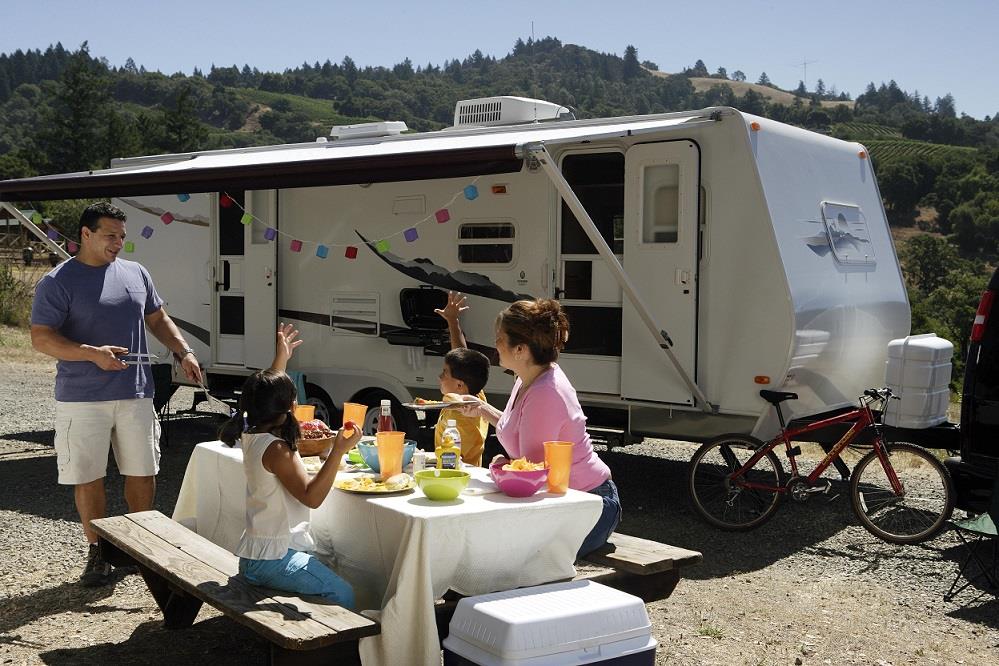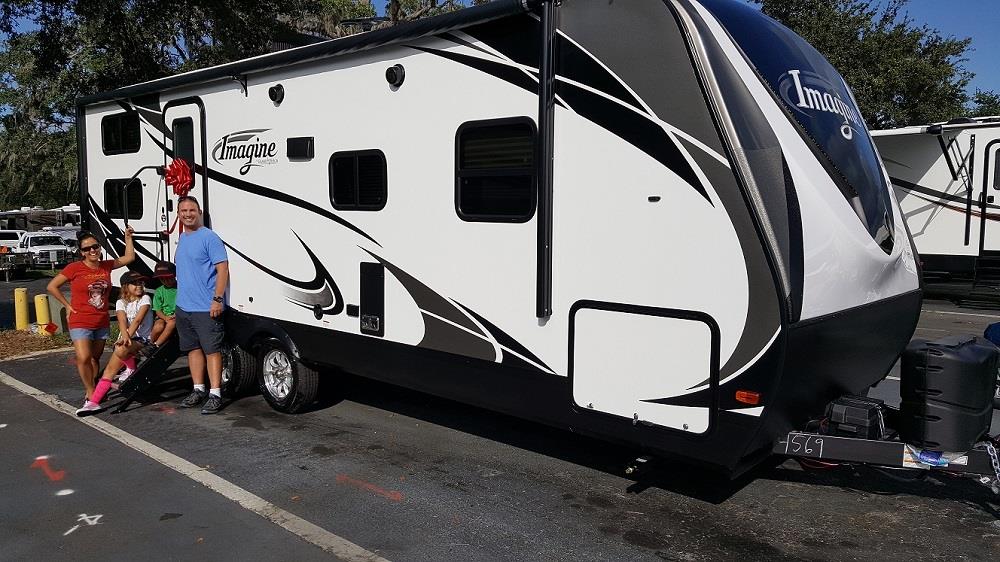
Whether you’re an equestrian heading to your next competition or a farmer heading to the state fair, we want to ensure that both you and your horse arrive healthy, happy and ready for the next adventure.
You may end up deciding that you want to take one of our RV education and training courses or seek the help of a professional, but in the meantime, we have some basic information and tips for anyone wondering how to transport a horse.
Types of Trailers
Bumper Pull TRAILER

Bumper pull trailers are usually smaller and cost-effective, which makes them a great choice for people who are new to transporting horses. Because of the common ball hitch and lightweight design, bumper pull trailers are easier to maneuver around corners than other types of trailers.
GOOSENECK TRAILER

When you find yourself traveling longer miles or needing more RV storage space, the gooseneck trailer may be the best option. Gooseneck trailers can come with dressing rooms, spacious tack rooms or even fully-equipped living quarters for overnight stays. The gooseneck trailer requires more power and skill to haul, so be sure you’re up for the challenge before making your decision.
Living Quarters Trailer

Complete with luxuries like showers, toilets, beds, sofas and more, choosing a horse trailer with living quarters can add convenience and comfort to your next trip. Because of the increased weight, these types of trailers require trucks with higher towing capabilities; however, they can also help you save money while on the road!
Tips for Hauling Horses
Bring Your Horse’s Paperwork
Before you travel across state lines, you’ll need to make sure you have the required travel documents for any horses you are transporting. This often includes a Health Certificate, Brand Inspection and negative Coggins test. You’ll also want to make sure your horses are vaccinated against any diseases that are more common where you’re traveling.
Pay Attention to hydration
When transporting horses, you probably already understand the importance of keeping your horse hydrated throughout your trip, but you might not know how to check if your horse is dehydrated. Use routine stops to make sure your horse’s resting heart rate is lower than 60 and that the color returns to your horse’s gums in two seconds or less after pressing gently on them.
SAFETY FIRST
All Featherlite trailers offered by Lazydays come standard with features like rubber tie rings for a quiet interior, thick rubber matting, ventilation and durable construction. While these features help prevent stress, you should also consider wrapping your horse’s legs with standing bandages or shipping boots to prevent blood from pooling in the legs. If your horse is traveling in a trailer without plexiglass over the screens and openings, you’ll want to make sure any wood shavings you use are not too fine or dusty so as to prevent them from getting caught in the open airflow and flying into your horse’s face. You should also consider having your horse wear a fly mask to prevent any eye damage.
Browse our inventory of Featherlite horse trailers to learn more about the different models we offer and the many features that help keep your horses safe and calm on the road, and check out our RV lifestyle blog for more information about horse transportation and RV living.



